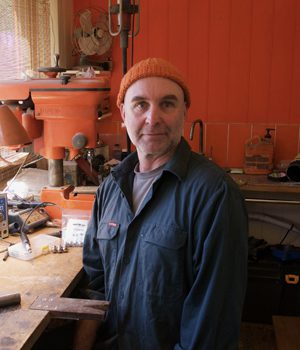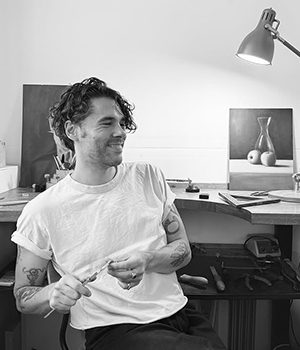Catching Up With Rhys Turner
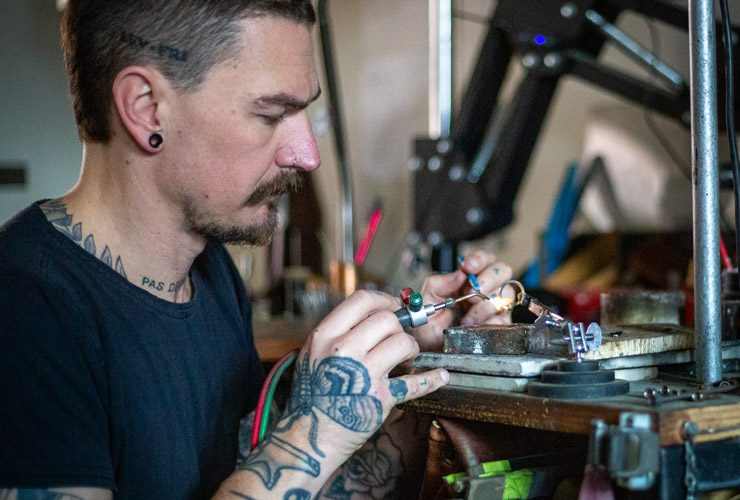
What have you been working on lately?
Good question. I think after Dark Mode I was on a bit of a creative slump. It takes so much energy and effort with all the new designs so I have just been trying to settle in again and get a bit of momentum.
So at the moment I’m doing a lot of commissions, but it’s almost 12 months since Dark Mode so I’m trying to get the creative process flowing again with some new designs. I always find a good place to start is to do something that you’re not comfortable with – even if it’s just a different colour stone, that can get your mind moving in a new direction that isn’t normal.
What has come out of the end of Dark Mode for you? Do you see your practice differently now?
Yes and no. Dark Mode was interesting because I was reverting back to where my original design inspiration came from – the more sharp and boxy designs. That was where I first started trying to do something different as a jeweller, so it’s like rewinding ten years and trying to build on my old ideas about jewellery. It was a really good process and felt really natural to be doing that.
Is there a piece that you’ve been dreaming of making for a long time but haven’t gotten around to yet?
That’s a hard question, because there’s always something and it doesn’t stop really. I would say Dark Mode allowed me to get some of those ideas out, hence a little bit of a creative crash afterwards. And because working through a new design is always complicated.
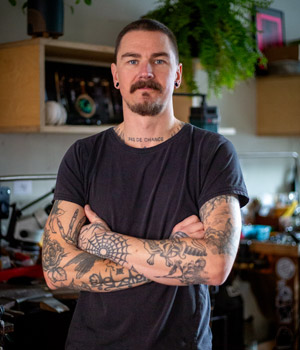
When you finally start to put a design together that you had in your mind for years, sometimes it just doesn’t work. Whether the proportions aren’t quite right or it just doesn’t look the way you thought it was going to turn out. But then sometimes that leads you in a new direction to something that looks completely different but way better, so there’s a lot of mental energy that goes into the whole process.
When you’re coming up with new designs do you have the concepts in your mind first, or are they usually born on the bench when you’re in the process of making something else?
Yeah that’s an interesting one because when I first started at university I was doing a design degree, and it was 50/50 art based and trade based. And for me I really struggled at the design side of it for those three years. When I left, I ended up going into the trade and found that by just working on traditional pieces I would be halfway through making something and that’s where the creative process came in. I would see components and think ‘oh, that would be cool just on its own’ and that’s how I began to change it up.
So the design process opened up for me a lot later than other people. I started to figure out what I liked through making, and once that opened up an aesthetic then I could design away from the bench. So both I would say these days. It’s really hard to find your own aesthetic initially, it’s the hardest thing to do and to try and be different. So I would say for me it took years, like probably five to ten years, before I really understood my aesthetic and that was from mostly working at the bench and happy accidents.
And do you have a jewellery collection of your own, do you wear a lot of jewellery?
Not really. It’s funny though isn’t it? Some jewellers just don’t wear it. But there’s definitely lots that I would like to wear, especially some pieces I have made. I think the Béton Brut Ring from Dark Mode is something that I would wear for sure. But there’s also something about the making process and then pieces going on to their new home that I really enjoy.
I’ve only held on to one piece that I haven’t put up for sale yet and that’s just because of the stone. It’s a Torrington Emerald and it’s such a rare and interesting stone that I’ll never be able to replace it. And I didn’t realise how rare it was, and being that it’s an emerald, they’re obviously quite brittle. So, putting it in such a heavy setting was not the smartest idea. I didn’t realise how rare the stone was then, and that was probably a lifesaver. I would’ve had a heart attack if I realised how rare it was when I was setting it.
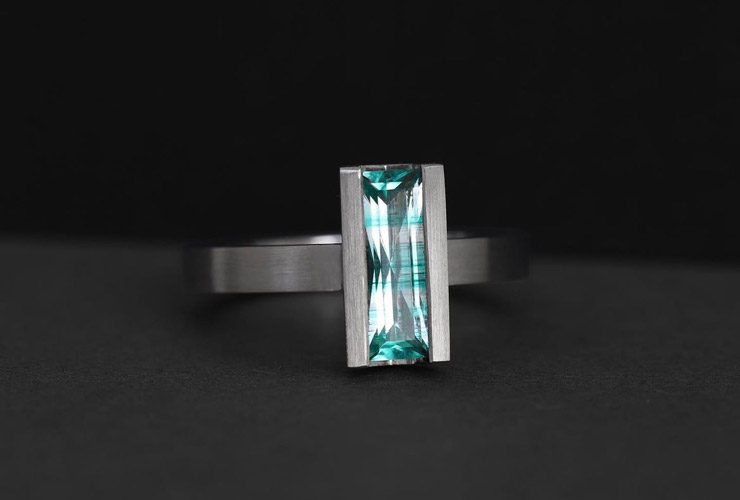
What do you think separates good design from bad design?
The thought process. If there hasn’t been any thought process behind it I don’t even know if you could call it design. There needs to be reasoning for it and it doesn’t have to be super deep and meaningful, it can just be that someone’s trying to challenge an idea or they just like something. You don’t have to be flooded with information and inspiration. I think if there’s thought that goes into it and a consistency in the person’s work, and it’s a bit different, then that’s it.
But that’s also a really hard question because sometimes I like when I see something that I don’t like, because I think, well, it’s different, you know, like at least someone’s really pushing the envelope there.
